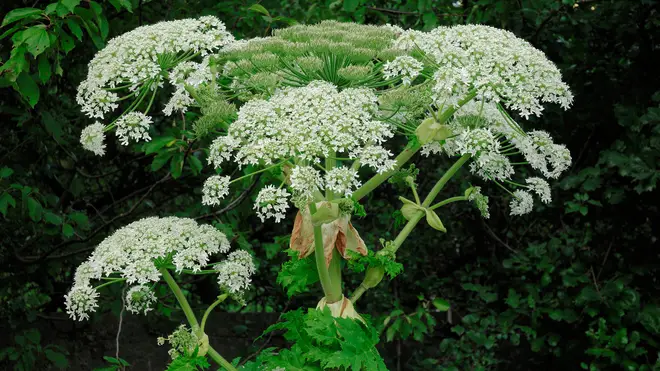Giant hogweed: What does it look like, is it poisonous and what to do with a sting?
27 June 2023, 13:02

Giant hogweed is a common poisonous plant in the UK and can cause burning, blisters and scarring.
People across the UK have been warned to avoid the giant hogweed plant after a 21-year-old man was left with scarring from a sting.
Daniel Logan was at Boston Manor Park in London over the weekend when he was stung by a giant hogweed, causing a burn which has left him with scarring.
He has described the ordeal as "terrible" and said that he fears for children who could easily be harmed by the plant.
"It's been terrible to be honest," Daniel said: "Now I know, it will never happen again. But I'm lucky, I'm 21 years old and it's only my ankle."

He went on: "If a little kid falls in there, gets it on their face or something, that's going to cause them life-changing injuries so I'm lucky but someone else may not be.
"If I had seen some signs I wouldn't have gone down into the bush. I've only gone in to get the ball for my brother but if I was made aware what it was and what it could do to you, I definitely wouldn't have gone in there."

Botanist and invasive species expert Dr Mark Spencer has warned people about the dangers of the giant hogweed.
"It's the only plant I would actually say to beware of in our country", he said: "We have many, many poisonous plants and fungi, most of which are totally safe to be around - apart from giant hogweed. Do not touch it."
But how do you recognise giant hogweed? What does it look like? What happens if you are stung and how can you treat it?

What is giant hogweed?
Giant hogweed, real name Heracleum Mantegazzianum, is a plant originally from Southern Russia and Georgia but now very common in the UK.
It can reach up to three meters high and cause severe skin burns if a person is 'stung' or exposed to the sap.
The giant hogweed is common in the wild and can be found in gardens, allotments, woodland and heathland.
What does giant hogweed look like?
According to the Woodland Trust, giant hogweed can be recognised by its stems, leaves and flowers.
The giant hogweed stems are green, and often have purple blotches and stiff, white, bristly hairs. The leaves are large and appear like those of a rhubarb with irregular, jagged edges. The underside of the leaf is hairy.
Giant hogweed flowers in June and July and appears with small and white (sometimes slightly pink) flowers which cluster on an umbrella-like head.

What happens if you touch giant hogweed?
It you are stung by a giant hogweed, you are exposed to the plant's furocoumarin, which makes skin extremely sensitive to sunlight.
The Woodland Trust explains: "If the sap gets onto your skin and it's then exposed to the sun, your skin can blister badly. Blistering can then recur over months and even years. This is known as phytotoxicity."
What do I do if I am stung to giant hogweed?
If you are exposed to the sap on a giant hogweed you should be sure to wash the area as soon as possible.
You must keep the area out of sunlight for a few days and contact a medical professional.
Read more:
- Asian hornet with deadly sting identified in the UK for second time this year
- Home-owner's warning after neighbour's bamboo plant causes £100,000 worth of damage
- Terrified shopper finds world’s largest venomous spider with egg sac in Tesco bananas

































